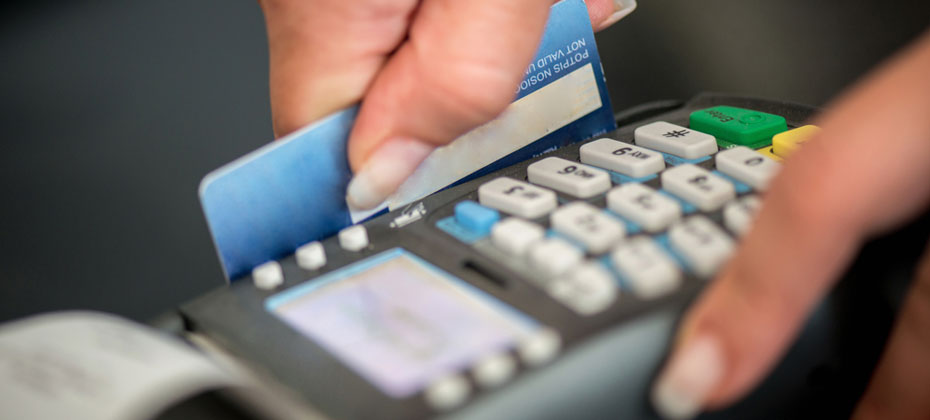Financial Services

Over the next several years, the large number of home equity lines of credit (also known as HELOCs) originated during the boom period of 2005 to 2008, will begin approaching their end of draw periods. Upon entering the repayment period, these 10-year interest-only loans will become amortized to cover both principal and interest, resulting in payment shock for many borrowers. HELOCs representing $265 billion will reach their end of draw between 2015 and 2018. Now is the time for lenders to be proactive and manage this risk effectively. Lenders with HELOC portfolios aren’t the only ones affected by HELOC end of draw. Non-HELOC lenders also are at risk when consumers are faced with payment shock. Experian analysis shows that it is an issue of consumer liquidity — consumers who reach HELOC end of draw are more likely to become delinquent not only on their HELOC, but on other types of debt as well. If consumers were 90 days past due on their HELOC at end of draw, there was a 112 percent, 48.5 percent and 24 percent increase in delinquency on their mortgage, auto and bankcard trade, respectively. With advanced data and analytics, lenders can be proactive in managing the risk associated with HELOC end of draw. Whether your customer has a HELOC with you or with another lender or is a new prospect, having the key data elements to obtain a full view of that consumer’s risk is vital in mitigating HELOC end-of-draw risk. Lenders should consider partnering with companies that can help them develop and deploy HELOC risk strategies in the near future. It is essential that lenders proactively plan and are well-positioned to protect their businesses from HELOC end-of-draw risk. Experian HELOC end of draw study

Accuracy matters. It matters in dart throwing, math calculations, and now more than ever, in data reporting. The Consumer Financial Protection Bureau (CFPB) issued a bulletin on Feb. 3 warning banks and credit unions that if they fail to meet accuracy obligations when reporting negative account histories to credit reporting companies, the result could be bureau action. As noted in the Fair Credit Reporting Act (FCRA) section 623, data furnishers have an obligation to ensure the accuracy of the information furnished to a Credit Reporting Agency (CRA). Violation of these rules presents a variety of risks, and the regulatory agencies have enforced harsh consequences. Avoiding penalties is certainly a strong incentive for data furnishers to implement a formal compliance management system and data quality program. But there are additional benefits to ensuring accuracy – most notably keeping customers happy and loyal, and maintaining a reputable brand in the marketplace. Today’s consumers increasingly understand the impact of credit scoring and data reporting, and recognize a poor credit score can impact their lives in major ways. Credit is tied to so many milestone financial moments. Securing mortgage loans, auto loans, obtaining low-interest rate interest credit cards and securing private student loans can all be derailed with an unfavorable and inaccurate credit report. Not to mention credit reports can influence one’s eligibility for rental housing, setting premiums for auto and homeowners insurance in some states, or determining whether to hire an applicant for a job. To properly serve customers who simply expect a fair and accurate representation of their financial history, data furnishers must be able to guarantee the credibility of their reported data. Those organizations that cannot ensure accuracy put their reputation at risk and may lose a customer’s trust and business. “Consumers should not be sidelined out of the basic banking services they need because of the flaws and limitations in a murky system,” Cordray said in the bulletin. “People deserve to have more options for access to lower-risk deposit accounts that can better fit their needs.” The CFPB has handled more than 105,000 credit-reporting complaints in its short history, making credit reporting the third most-complained-about consumer issue. By far the most common types of credit-reporting issues identified by consumers is incorrect information on credit report (77 percent).* Certainly these mistakes are not made intentionally. But speak to a consumer battling an inaccuracy, especially someone in the midst of applying for credit for a specific need, and frustrations can soar quickly. All lenders are advised to maintain a full 360-degree view of data reporting, from raw data submissions to the consumer credit profile. Better data input equals fewer inaccuracies. Additionally, there are comprehensive reporting solutions available to assess the accuracy of consumer credit data. The regulatory environment will without a doubt continue to be a hot topic in the media, fueled by announcements such as these by the CFPB, so lenders should take note and identify processes to ensure complete and utter accuracy. It matters in so many ways, so it’s best to make data reporting a priority now, if it’s not already. Source: CFPB August 2015 Monthly Complaint Report

Understanding the behaviors of best-in-class credit risk managers For financial institutions to achieve superior performance, having the appropriate set of credit risk managers is a prerequisite. The ability to gain insight from data and customer behavior and to use that insight for strategic advantage is a critical ingredient for success. At the same time, the risk-management community is under increasing pressure to understand and explain underlying trends in credit portfolios — and to monitor, interpret and explain these trends with ever-greater accuracy. A common problem financial institutions face when confronting staff resource needs is the difficulty in recruiting and retaining experienced risk-management professionals. The risk-management community is notoriously small, and hiring expertise from within this community is extremely difficult. Skilled risk managers truly are a finite resource, but their skill set is in huge demand. Hiring the right talent is crucial to job satisfaction, leading to higher engagement levels and reduced attrition costs. On top of that, employee engagement is vital to an organization’s success. It drives employee productivity and fosters a culture of innovation, which leads to higher profitability for the entire organization. Building, attracting and retaining risk-management resources requires a commitment to engaging in staff personal development. A great way to support employee engagement is to invest in their personal and professional development, including opportunities for training and team building. If an organization can show that it is committed to developing its people and providing opportunities for career growth, employee engagement levels will rise, with all the benefits this entails. Typically, financial institutions bridge the resource skill gap by either hiring skilled statistical and analytical experts or developing in-house resources. Both of these approaches, however, require significant on-the-job training to teach employees how to link raw statistical techniques and procedures to influencing the profit and loss statement of the business line which they support. The challenge is often broadening the understanding of these skill set “silos” and their contribution to the overall portfolio. By opening that view, the organization generates additional value from these resources as lines of communication are improved and insights and opportunities found within the data are shared more effectively across the organizational team. Experian’s Global Consulting Practice provides a solution to this problem. Our two-day Risk and Portfolio Management Essentials training workshop offers the opportunity to understand the behaviors of best-in-class risk managers. What are the tools and enablers required for the role? How do they prepare for the process of managing credit risk? What areas must risk managers consider managers across the Customer Life Cycle? What differentiates the good from the great? To complement the training modules, Experian® offers an interactive, team-based approach that engages course participants in the build options of a defined portfolio. Participants leverage the best-in-class techniques presented in the sessions in a series of competitive, team-based exercises. This set of cross-organizational exercises drives home the best-in-class techniques and further builds understanding that resonates across the organization long after the course is concluded. For our current offerings, locations and to register click here.

What is blockchain? Blockchain is beginning to get a lot of attention, so I thought it might be time to figure out what it is and what it means. Basically, a blockchain is a permissionless, distributed database that maintains a growing list of records (transactions) in a linear, chronological (and time-stamped) ledger. At a high level, this is how it works. Each computer connected to the network gets a copy of the entire blockchain and performs the task of validating and relaying transactions for the whole chain. The batches of valid transactions added to the record are called “blocks.” A block is the “current” part of a blockchain that records some or all of the recent transactions and once completed goes into the blockchain as a permanent database. Each time a block gets completed, a new block is created, with every block containing a hash of the previous block. There are countless numbers of blocks in the blockchain. To use a conventional banking analogy, the blocks would be a full history of every banking transaction for every person, and the blockchain would be a complete banking history. The entire blockchain is sent to everyone who has access, and every user validates the information in the block. It’s like if Tom, Bob and Harry were standing on the street corner and saw a cyclist hit by a car. Individually, all three men will be asked if the cyclist was struck by the car, and all three will respond “yes.” The cyclist being hit by the car becomes part of the blockchain, and that fact cannot be altered. Blockchain generally is used in the context of bitcoin, where similar uses of the structure are called altchains. Why should I care or, at the very least, pay attention to this movement? Because the idea of it is inching toward the tipping point of mainstream. I recently read an article that identified some blockchain trends that could shape the industry in coming months. The ones I found most interesting were: Blockchain apps will be released Interest in use cases outside payments will pick up Consortia will prove to be important Venture capital money will flow to blockchain start-ups While it’s true that much of the hype around blockchain is coming from people with a vested interest, it is beginning to generate more generalized market buzz as its proponents emphasize how it can reduce risk, improve efficiency and ultimately provide better customer service. Let’s face it, the ability to maintain secure, fast and accurate calculations could revolutionize the banking and investment industries, as well as ecommerce. In fact, 11 major banks recently completed a private blockchain test, exchanging multiple tokens among offices in North America, Europe and Asia over five days. (You can read The Wall Street Journal article here.) As more transactions and data are stored in blockchain or altchain, greater possibilities open up. It’s these possibilities that have several tech companies, like IBM, as well as financial institutions creating what has become known as an open ledger initiative to use the blockchain model in the development of new technologies that will enable a wider array of services. There is no doubt that the concept is intriguing — so much so that even the SEC has approved a plan to issue stock via blockchain. (You can read the Wired article here.) The potential is enough to make many folks giddy. The idea that risk could become a thing of the past because of the blockchain’s immutable historical record — wow. It’s good to be aware and keep an eye on the open ledger initiative, but let’s not forget history, which has taught us that (in the wise words of Craig Newmark), “Crooks are early adopters.” Since blockchain’s original and primary usage has been with bitcoin, I don’t think it is unfair to say that there will be some perceptions to overcome — like the association of bitcoin to activities on the Dark Web such as money laundering, drug-related transactions and funding illegal activities. Until we start to see the application across mainstream use cases, we won’t know how secure blockchain is or how open business and consumers will be to embracing it. In the meantime, remind me again, how long has it taken to get to a point of practical application and more widespread use of biometrics? To learn more, click here to read the original article.

Ensure you’re protecting consumer data privacy Data Privacy Day is a good reminder for consumers to take steps to protect their privacy online — and an ideal time for organizations to ensure that they are remaining vigilant in their fight against fraud. According to a new study from Experian Consumer Services, 93 percent of survey respondents feel identity theft is a growing problem, while 91 percent believe that people should be more concerned about the issue. Online activities that generate the most concern include making an online purchase (73 percent), using public Wi-Fi (69 percent) and accessing online accounts (69 percent). Consumers are vigilant while online Most respondents are concerned they will fall victim to identity theft in the future (71 percent), resulting in a generally proactive approach to protecting personal information. In fact, almost 50 percent of respondents say they are taking more precautions compared with last year. Ninety-one percent take steps to secure physical information, such as shredding documents, while also securing digital information (using passwords and antivirus software). Many consumers also make sure to check their credit report (33 percent) and bank account statements (76 percent) at least once per month. There’s still room for consumers to be safer Though many consumers are practicing good security habits, some aren’t: More than 50 percent do not check to see if a Website is secure Fifty percent do not have all their Web-enabled devices password-protected because it is a hassle to enter a password (30 percent) or they do not feel it is necessary (25 percent) Fifty-five percent do not close the Web browser when they are finished using an online account Additionally, 15 percent keep a written record of passwords and PINs in their purse or wallet or on a mobile device or computer Businesses need to be responsible when it comes data privacy Customer-facing businesses must continue efforts to educate consumers about their role in breach and fraud prevention. They also need to be responsible and apply comprehensive, data-driven intelligence that helps thwart both breaches and the malicious use of breached information and protect all parties’ interests. Nearly 70 percent of those polled in a 2015 Experian–Ponemon Institute study said that the increased visibility and media reporting of breaches, including payment-related incidents, have caused their organizations to step up data security efforts. Experian Fraud & ID is uniquely positioned to provide true customer intelligence by combining identity authentication with device assessment and monitoring from a single integrated provider. This combination provides the only true holistic view of the customer and allows organizations to both know and recognize customers and to provide them with the best possible experience. By associating the identities and the devices used to access services, the true identity can be seen across the customer journey. This unique and integrated view of identity and device delivers proven superior performance in authentication, fraud risk segmentation and decisioning. For more insights into how businesses are responding to breach activities, download our recent white paper, Data confidence realized: Leveraging customer intelligence in the age of mass data compromise. For more findings from the study, view the results here.

Who will take the coveted Super Bowl title in 2016? Now that we’re down to the final two teams, the commentary will heighten. Sportscasters, analysts, former athletes, co-workers ... even your local barista has an opinion. Will it be Peyton Manning's Denver Broncos or the rising Carolina Panthers? Millions will make predictions in the coming weeks, but a little research can go a long way in delivering meaningful insights. How have the teams been trending over the season? Are there injuries? Who is favored and what’s the spread? Which quarterback is leading in pass completions, passing yards, touchdowns, etc.? Who has been on this stage before, ready to embrace the spotlight and epic media frenzy? The world of sports is filled with stats resulting from historical data. And when you think about it, the world of credit could be treated similarly. Over the past several years, there has been much hype about “credit invisibles” and the need to “score more.” A traditional pull will likely leave many “no-file” and “thin-file” consumers out, so it’s in a lender’s best interest to leverage alternative scoring models to uncover more. But it’s also important to remember a score is just a snapshot, a mere moment in time. How did a consumer arrive to that particular score pulled on any given day? Has their score been trending up or down? Has an individual been paying off debt at a rapid pace or slipping further behind? Two individuals could have the exact same score, but likely arrived to that place differently. The backstory is good to know – in sports and in the world of credit. Trended data can be attached to balances, credit limits, minimum payment due, actual payment and date of payment. By assessing these areas on a consumer file for 24 months, more insights are delivered and lenders can take note of behavior patterns to assist with risk assessment, marketing and share-of-wallet analysis. For example, looking closer at those consumers with five trades or more, Experian trended data reveals: 27% are revolvers, carrying balances each month 27% are transactors, paying off large portions, or all of their balances 9% are rate surfers, who tend to frequently transfer balances to credit cards with 0% or low introductory rates. Now these consumers can be viewed beyond a score. Suddenly, lenders can look within or outside their portfolio to understand how consumers use credit, what to offer them, and assess overall profitability. In short, trended data provides a more detailed view of a borrower’s historical credit performance, and that richness makes for a more informed decision. Without a doubt, there is power in the score – and being able to score more – but when it comes time to place your bets, the trended data matters, adding a whole new dimension to an individual’s credit score. Place your wagers accordingly. As for who will win Super Bowl 2016? I haven’t a clue. I’m more into the commercials. And I hear Coldplay is on for the half-time show. If you’re betting, best of luck, and do your homework.

Attract and retain high-value demand deposit accounts The excitement of the new year has ended, and now the big question remains: What will 2016 hold for our market and the economy? So far, we’ve seen this election year bring a volatile financial market: The Federal Reserve increased short-term interest rates by 25 basis in December, and there is uncertainty if and when future increases will come China’s gross domestic product is forecasted at 6.5 percent, the lowest in a quarter century The Dow Jones industrial average is down 10 percent to start the year, signaling a lot of uncertainty for banks and consumers It’s hard to find answers in a shifting financial landscape with a long list of mixed signals. The average consumer is looking on and wondering if we face another Great Recession or if the current economy is spiking a fever just before it is completely cured. The reality, for those of us in the banking industry, is that the modest economic recovery is likely to continue as part of a new normal pattern. In 2016, banks that remain competitive in a more digital world will be those that have frictionless products and processes to attract and retain high-value, highly sought-after consumer deposits and loans. Banks should expect the competition for deposits to intensify, and they will need to ensure that new deposit customers are on boarded effectively and cross-sold loan products quickly to reduce first-year attrition. Cross-selling at the point of origination for the demand deposit account (DDA) customers is the best way to ensure that new customers keep the institution as their primary bank. Financial institutions can exceed consumer expectations and ensure a competitive business model by leveraging modernized technology capabilities fully in combination with making relevant decisions to deliver consumer-friendly experiences. First-year DDA attrition rates will demonstrate how the consumer’s expectations were met and if the new bank got the account-opening process right or wrong. Experian® suggests three capabilities clients should consider: A deposits technology platform that offers frictionless change to data, origination strategies and instant cross-sell to loan products that yield sticky customers Strategies that comply with current and evolving regulatory demands, such as those being sought by the Consumer Financial Protection Bureau (CFPB) Business planning to identify execution gaps and a road map to ensure that gaps are addressed, confirming continued competitive ability to attract high-value deposit and loan customers DDA-account opening effectiveness can be achieved by using a consumer’s life stage, affordability considerations, unique risk profile and financial needs to on board optimally and grow those high-value consumers effectively and efficiently. Financial institutions that are nimble and fast adopters of these critical capabilities will reduce operating expenses for their organizations, grow sustainable revenue from new prospects and customers, and delight those new customers along the way. This is a win-win for banks and consumers. Join me next week as we discuss best practices across the entire demand deposit account life cycle.

The new year has started, the champagne bottles recycled. Bye-bye holidays, hello tax season. In fact, many individuals who are expecting tax refunds are filing early to capture those refunds as soon as possible. After all, a refund equates to so many possibilities – paying down debt, starting a much-needed home improvement project or perhaps trading up for a new vehicle. So what does that mean for lenders? As consumers pocket tax refunds, the likelihood of their ability to make payments increases. By the end of February 2014, more than 48 million tax refunds had been issued according to the IRS – an increase of 5.6 percent compared to the same time the previous year. As of Feb. 28, the average refund in 2014 was $3,034, up 3 percent compared to the average refund amount for the same time in 2013. To capitalize on this time period, introducing collection triggers can assist lenders with how to manage and collect within their portfolios. Aggressively paying down a bankcard, doubling down on a mortgage payment or wiping out a HELOC signal to the lender a change in positive behavior, but without a trigger attached, it can be hard to pinpoint which customers are shifting from their status quo payments. Experian actually offers around 100 collection triggers, but lenders do not need all to seek out the predictive insights they require. A “top 20” list has been created, featuring the highest percentages in lift rates, and population hit rates. Experian has done extensive analysis to determine the top-performing collection triggers. Among the top 15 to 20 triggers, the trigger hit rate ranged from 2 to 8 percent on an average client’s total portfolio, taking into consideration liquidation rates, average percent of payment lifts, lift in liquidation rates over the baseline liquidation, percent of overall portfolio that triggered, percent of overall portfolio that triggered only on the top-selected triggers, and percent of volume by trigger on the total customers that had a trigger hit. With that said, it is essential to implement the right strategy that includes a good mixture of the top-performing triggers. The key is diversifying and balancing trigger selection and setting triggers up during opportune times. Tax season is one of those times. Some of the top-ranked triggers include: Closed-Zero Balance Triggers: This is when a consumer’s account is reported as closed after being delinquent for a certain number of days. Specifically, the closed-zero balance trigger after being delinquent for 120 days has the highest percent of payment lift over an average payment that you would receive from a customer (at a 710 percent lift rate). These triggers are good indicators the consumer is showing positive improvement, thus having a higher likelihood for collections. Paid Triggers: This is when a consumer’s account is reported as paid after being delinquent, in collections, etc. Five of the top 20 triggers are paid triggers. These triggers have good coverage and a good balance between high lift rates (100 percent to 500 percent) and percent of the triggered population. These triggers are also good indicators the consumer is showing positive improvement, thus having a higher likelihood for collections. Inquiry Triggers: This is when a consumer is applying for an auto loan, mortgage loan, etc. The lift rates for these triggers are lowest within the Top 20, but on the other hand, these triggers have the highest hit rates (up to a 33 percent hit rate). These triggers are good indicators consumers are seeking to open additional lines of credit. Home Equity Loan Triggers: These triggers indicate the credit available on a consumer’s home equity loan. They are specifically enticing to collectors due to the fact that home equity lines of credit are usually larger than your average credit on your bank card. The larger the line of credit, the more you are able to potentially collect. To learn more about collection triggers, visit https://www.experian.com/consumer-information/debt-collection.html

Looking at true fraud rate I’ve talked with many companies over the years about their fraud problems. Most have a genuine desire to operate under the fraud prevention model and eliminate all possible fraud from their systems. The impact on profit is often the primary motivation for implementing solutions, but in reality most companies employ a fraud management schema, offsetting the cost of fraud with the cost of managing it. There are numerous write-ups and studies on the true cost of fraud. What most people don’t realize is that, for each item lost to fraud, a business operating on 10 percent net profit margins will need to sell 10 times the amount of product in order to recover the expense associated with the loss. These hard costs don’t include the soft dollar costs, such as increased call center expenses to handle customer calls. Recently, some organizations have started to add reputational risk into their cost-of-fraud equation. With the proliferation of social media, a few unhappy customers who have been victims of fraud easily can impact an organization’s reputation. This is an emerging fuzzy cost that eventually can be tied back to lost revenue or a drop in share price. Most companies say with pride that their acceptable fraud rate is zero. But when it comes time to choose a partner in fraud detection, it almost always comes down to return on investment. How much fraud can be stopped — and at what price? More informed organizations take all operational expenses and metrics into consideration, but many look at vendor price as the only cost. It’s at this point that they start to increase their acceptable fraud rate. In other words, if — hypothetically — Vendor A can stop only 80 percent of the fraud compared with Vendor B, but Vendor A costs less than 80 percent of what Vendor B costs, they’ll choose Vendor A. All of a sudden, their acceptable fraud rate is no longer zero. This method of decision making is like saying we’ll turn off the security cameras for 20 percent of the day because we can save money on electricity. On the surface, I understand. You have to be accountable to the shareholders. You have to spend and invest responsibly. Everyone is under pressure to perform financially. How many executives, however, take the time to see where those lost dollars end up? If they knew where the money went, would they change their view? We must be vigilant and keep our acceptable fraud rate at zero.

As thought leaders in every industry make predictions for what 2016 will bring, I’m guessing there will be a few constants. New couples will marry. Some couples, sadly, will divorce. Young and old will move – some into first homes – others downsizing or making moves cross-country for work. And waves of individuals will clamor to the latest devices – a new iPhone7, perhaps. The Apple rumors are already flying. Yes, no big surprises, right? But, do you know what all of these very standard life events have in common? These transitions often result in shifts in consumer data, sometimes making people more difficult to track and contact. New last names, new addresses, new phone numbers. Suddenly, the consumer data that companies and lenders have on file are dated, and when it comes time to reach out to these individuals, it’s a challenge to connect. But that is just the beginning. The Federal Communications Commission (FCC) is increasing its efforts to register consumer complaints and taking aggressive actions to stop companies from making unsolicited phone calls. And the penalties are steep. Fines per individual infraction can be anywhere from $500 to $1,500. Companies have been delivered hefty penalties in the thousands, and in some cases millions, of dollars, over the past few years. All have questions and are seeking to understand how they must adjust their policies and call practices. Now those multiple attempts to call and find a consumer can cost you – big time. No more “shotgun” approaches to identifying and using phones. It’s simply too risky. The Telephone Consumer Protection Act (TCPA), enforced by the FCC, has been around since 1991, but regulations have been closely scrutinized over the past year since the FCC announced a new ruling last summer to clarify hot topics. In their July paper, they aim to communicate the definition of an “auto-dialer,” consent-to-call rules, how to address the reassignment of cell phone numbers, and the new requirement for “one call” without liability. In short, the Declaratory Ruling has opened the door to even greater liability under the TCPA, leaving companies who place outbound customer calls at-risk for compliance violations. Some are projecting the TCPA rules will continue to become even more expansive in 2016, so companies must really assess their call strategies and put best practices in place to increase right-party contact rates. Suggestions include: Identify landline and cell phones for TCPA compliance with dialer campaigns Focus on right- and wrong-party contact to improve customer service Score phones or apply cut-off scores based on the confidence of the number or match Scrub often for updated or verified information Establish a process to identify ported phones Determine when and how often you dial cell phones Provide consumers user-friendly mechanisms– such as texting “STOP” or “UNSUBSCRIBE” – to opt-out of receiving TCPA-covered communications. Review the policies and practices of third-party vendors to ensure they are not sending communications violating the TCPA With the huge advancements in mobile technology and the ever-changing digital landscape, it’s challenging to keep up, but regulators are cracking down on violations, and a slew of lawyers are ready to file on behalf of unhappy consumers dialed one-too-many times. Beyond a best-practice review, tools and systems are available to identify the right number for those moving and changing consumers. And I’m sure we can all agree, those life events will continue to happen in 2016. Marriages, divorces, moves, new devices. They’re coming. As a result, it’s necessary to track the resulting changes to consumer data. Only then will you have a shot at avoiding negative customer experiences and fines.

The numbers are staggering: more than $1.2 trillion in outstanding student loan debt, 40 million borrowers, and an average balance of $29,000. With Millennials exiting college and buried in debt, it’s no surprise they are postponing marriage, having babies, home purchases and other major life events. While the student loan issue has been looming for years, the magnitude is now taking center stage. All of the 2016 presidential contenders have an opinion, and many are starting to propose solutions – some going as far as to call for “debt-free college.” The issue has also caught the eye of the Consumer Financial Protection Bureau (CFPB). In its 2014 report, the CFPB stated one in four recent college graduates is either unemployed or underemployed. They also stated when faced with the inability to repay their debt, students lack payment options and are unclear as to how to resolve their debt. There is a bright spot. Experian reported new findings stating that among adults 18 to 34 years of age, the average credit score of those who had at least one open student loan account was 640, 20 points higher than others in their age group. So, if paid in a timely manner, student loans can help younger people establish a decent credit history before they go on to buy things like homes and cars. Still, education is key. Today, only 24 U.S. states require some form of financial literacy to be included in their high school course work, with only four states (Utah, Montana, Tennessee and Virginia) devoting a full semester to a personal finance course. Education is needed before students start diving into the student loan scene, and also after they graduate, to ensure they understand their repayment options and obligations. The CFPB is calling on all parties (universities, colleges, private lenders, advocates, policy makers and even family members) to get involved. Providing financial education, financial literacy, repayment options, deferral methods and income calculators are all needed to tackle this growing problem. The Great Recession and slow recovery brought home the importance of a college degree in today’s economy for many Americans. Bachelor’s degree recipients fared much better than their counterparts who only finished high school. The question becomes how to fund it, and make sure students who rely on loans understand the finances attached to this milestone investment. Learn more about Experian’s student debt trends and credit education in The Increasing Need for Consumer Credit Education: A Review of Student Debt.

Leveraging customer intelligence in the age of mass data compromise Hardly a week goes by without the media reporting a large-scale hack of sensitive personal or account information. Increasingly, the public seems resigned to believe that such compromises are the new normal, producing a kind of breach fatigue that may be lowering the expectations consumers have for identity and online security. Still, businesses must be vigilant and continue to apply comprehensive, data-driven intelligence that helps to thwart both breaches and the malicious use of breached information and to protect all parties’ interests. We recently released a new white paper, Data confidence realized: Leveraging customer intelligence in the age of mass data compromise, to help businesses understand how data and technology are needed to strengthen fraud risk strategies through comprehensive customer intelligence. At its core, reliable customer intelligence is based on high-quality contextual identity and device attributes and other authentication performance data. Customer intelligence provides a holistic, bound-together view of devices and identities that equips companies and agencies with the tools to balance cost and risk without increasing transactional friction and affecting the customer experience. In the age of mass data compromise, however, obtaining dependable information continues to challenge many companies, usually because consumer-provided identities aren’t always unique enough to produce fully confident decisioning. For more information, and to get a better sense of what steps you need to take now, download the full white paper.

Experian data shows consumers are more confident managing their credit since the recession. The Q3 2015 Experian Market Intelligence Brief was released today featuring data that highlights consumer credit card debt has now reached its highest level since Q4 2009. Credit card debt levels reached $650 billion in Q3 2015, the highest it has been since Q4 2009 when it was $667 billion. Credit card delinquency rates on outstanding balances 60 or more days past due have decreased 71 percent during the same time period. Combining those indicators with the national unemployment rate dropping 50 percent during the same span illustrates a positive economic outlook on credit card trends among lenders and consumers. “Overall credit card limits have increased 102 percent since Q4 2009 with $82 billion originated in Q3 2015,” said Kelly Kent, vice president of Experian Decision Analytics. “The increase in limits from lenders and the steady climb in credit card debt combined with exceptional delinquency rates signals greater confidence among consumers as they are showing more assurance in managing their credit since the recession. We expect to see credit card debt increase in Q4 based on historical seasonal trends driven by the holiday shopping season especially with the early positive holiday sales as a sign.” The Q3 2015 Experian Market Intelligence Brief report is now available.

The financial services industry continues to face mounting pressures to meet the highest standards of data reporting and accuracy. New regulations and mandates are introduced regularly, impacting the way companies do business. And a more credit-educated consumer base is seeking insights into their own credit data, providing a separate second of eyes that demand accuracy. Not only has the Fair Credit Reporting Act (FCRA) set requirements on dispute investigation and response, but the Consumer Financial Protection Bureau (CFPB) is also paying close attention. Recent announcements indicate the CFPB wants more information about the credit eco-system to gain more data about consumer disputes. According to the CFPB, it’s a joint problem – “the NCRAA’s, data furnishers, public record providers, and consumers all play roles which affect the accuracy of the information with credit reports.” And it’s not just the big banks that are being targeted with fines. The CFPB has made it clear it will also direct attention to certain nonbanks and financial products. In today’s data-driven environment, there are roughly 12,000-plus data furnishers, resulting in more than one billion pieces of information being updated on a monthly basis. Over 220 million consumers have some form of credit information attached to them, and transactional data is flowing all the time. Fail to update and a furnisher will quickly see flaws in their reporting. In fact, a recent study revealed an estimated 2.1% of contact info goes bad if unattended for more than one month. Clearly, achieving data quality is an ongoing investment for any organization, but companies often lack a clean plan. Some data furnishers fail to report, or elect to report to just one bureau, even though providing better data will result in a more complete and accurate credit profile. So how do you tackle the challenge of data quality? Organizations should consider implementing these six steps: Review data governance. Correct errors in data submissions. Complete an audit of data submissions. Evaluate disputes and resolutions. Compare data to peers and the industry. Review existing policies and processes. Follow these steps and your organization will earn a reputation among both regulators and consumers for clean, credible data. Plus, the investment in better data will reduce the need to resolve future disputes and fines. To learn more about meeting your FCRA responsibilities and best practices around data quality, check out our on-demand webinar or data integrity services site.

It’s official. Millennials have surpassed Baby Boomers in population size, according to the US Census. And while they are quick to adopt the “selfie” and all things social, they have been slow to embrace the world of credit. Sure, there’s been increased regulation over the past decade, and coming into adulthood in the midst of the Great Recession hasn’t helped. But don’t count Millennials out of the credit game just yet. A deeper, more segmented view of this digital-dependent generation shows a very diverse population with plenty of opportunity for lenders. Plus, their sheer size in numbers and $200 billion in annual buying power demand financial institutions evolve to accommodate this massive market. As Gen Y comes of age, there is growing evidence they are open to building and growing their personal credit history. But if financial institutions wish to capture the attention and business of this demographic, they must adapt, leveraging deeper segmentation insights with more effective prospecting strategies to reach them. Experian's data reveals key trends in terms of how this generation is utilizing credit, tips and tools to find the most credit-ready individuals, and strategies to grow the thin-file Millennials as they come of age. “Given the significance millennials play in financial services and the credit marketplace, it is crucial to understand this influential consumer segment and how they use credit as a tool,” said Michele Raneri, vice president of analytics and business development. “While this generation may not look like they are on the right track financially, it’s important to keep in mind that credit scores are built on credit experiences, and while this generation has been slower to use credit, they have plenty of opportunities to build a positive credit history.” To learn more about Millennials and credit, visit Experian.com/millennials.